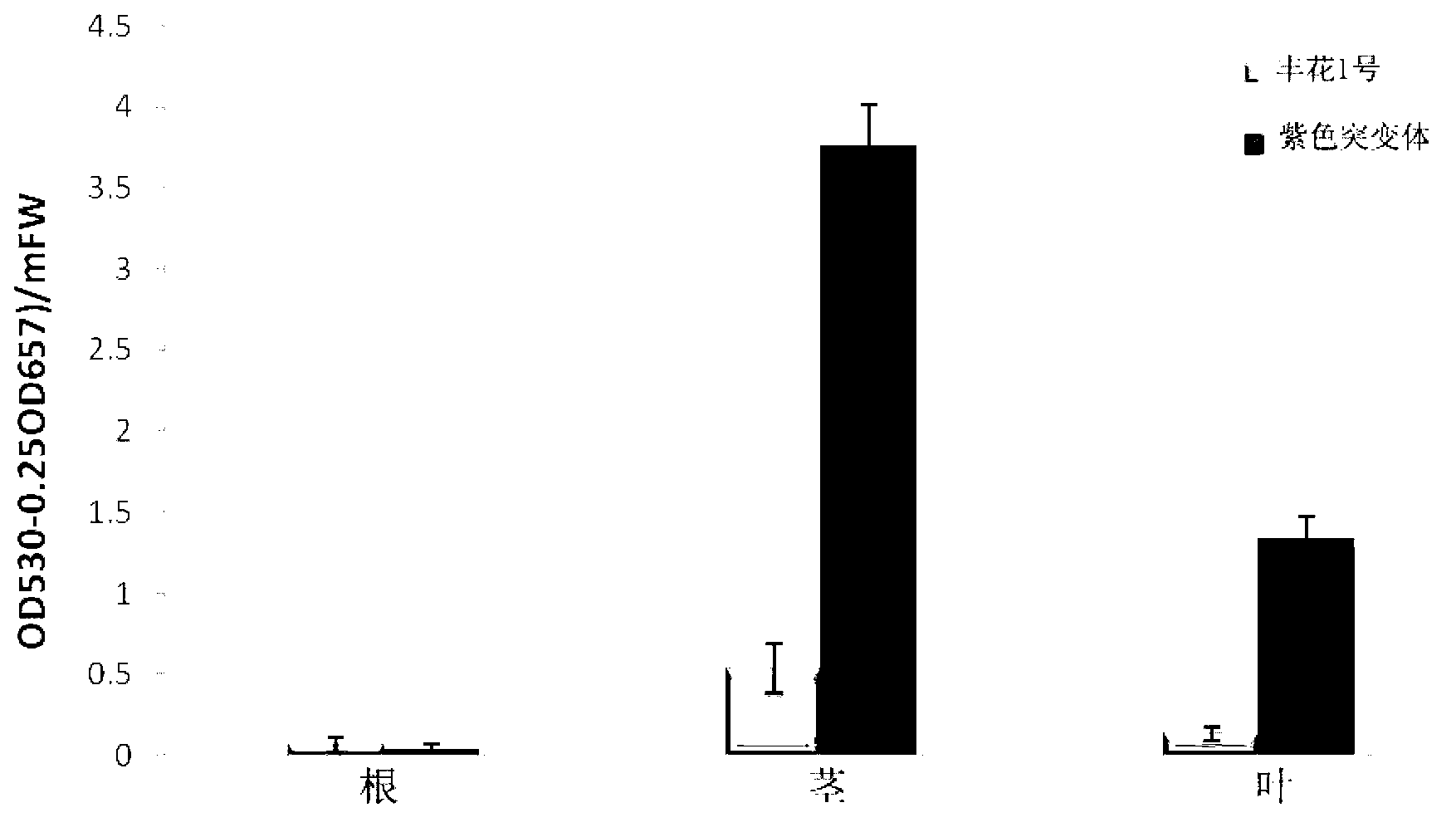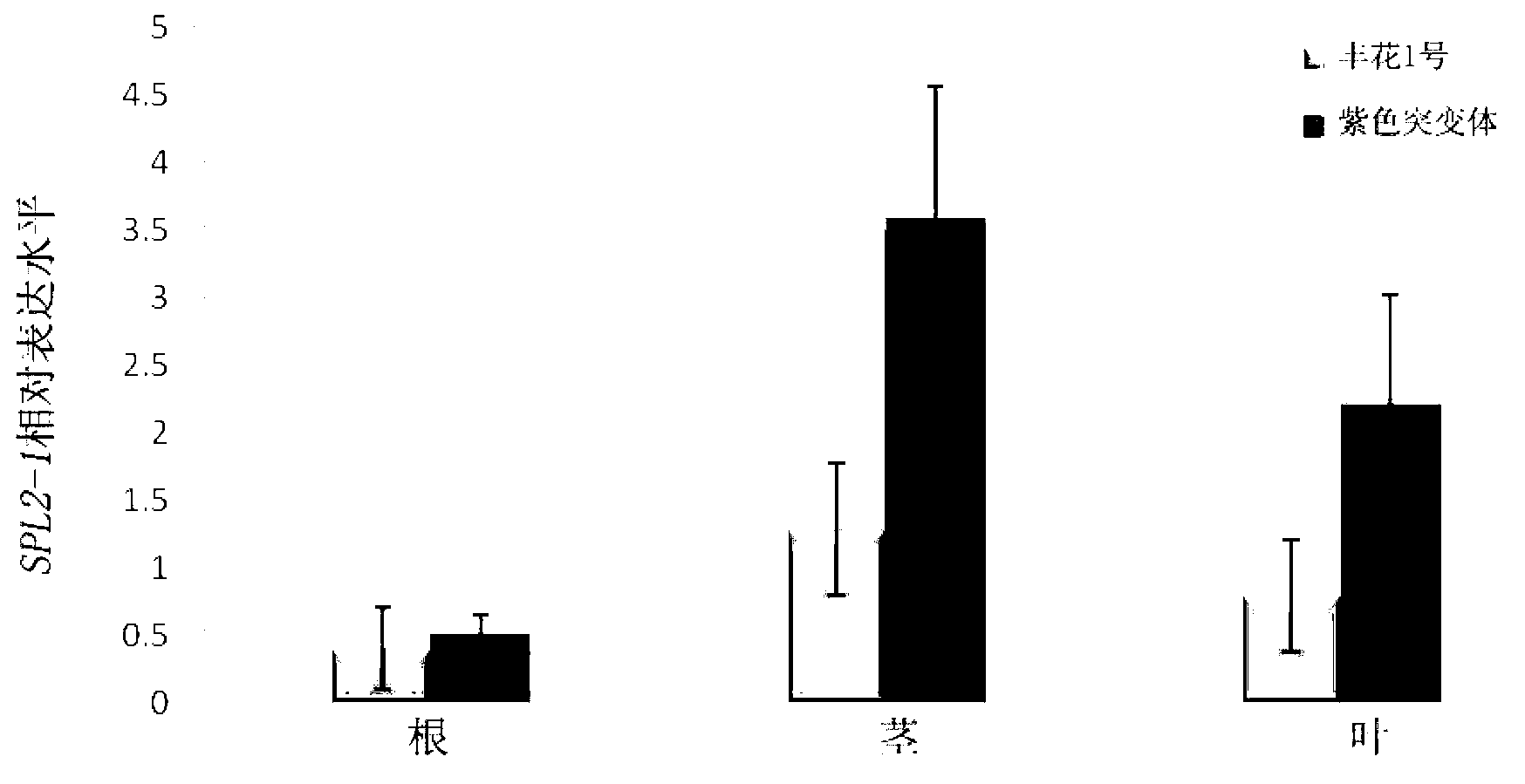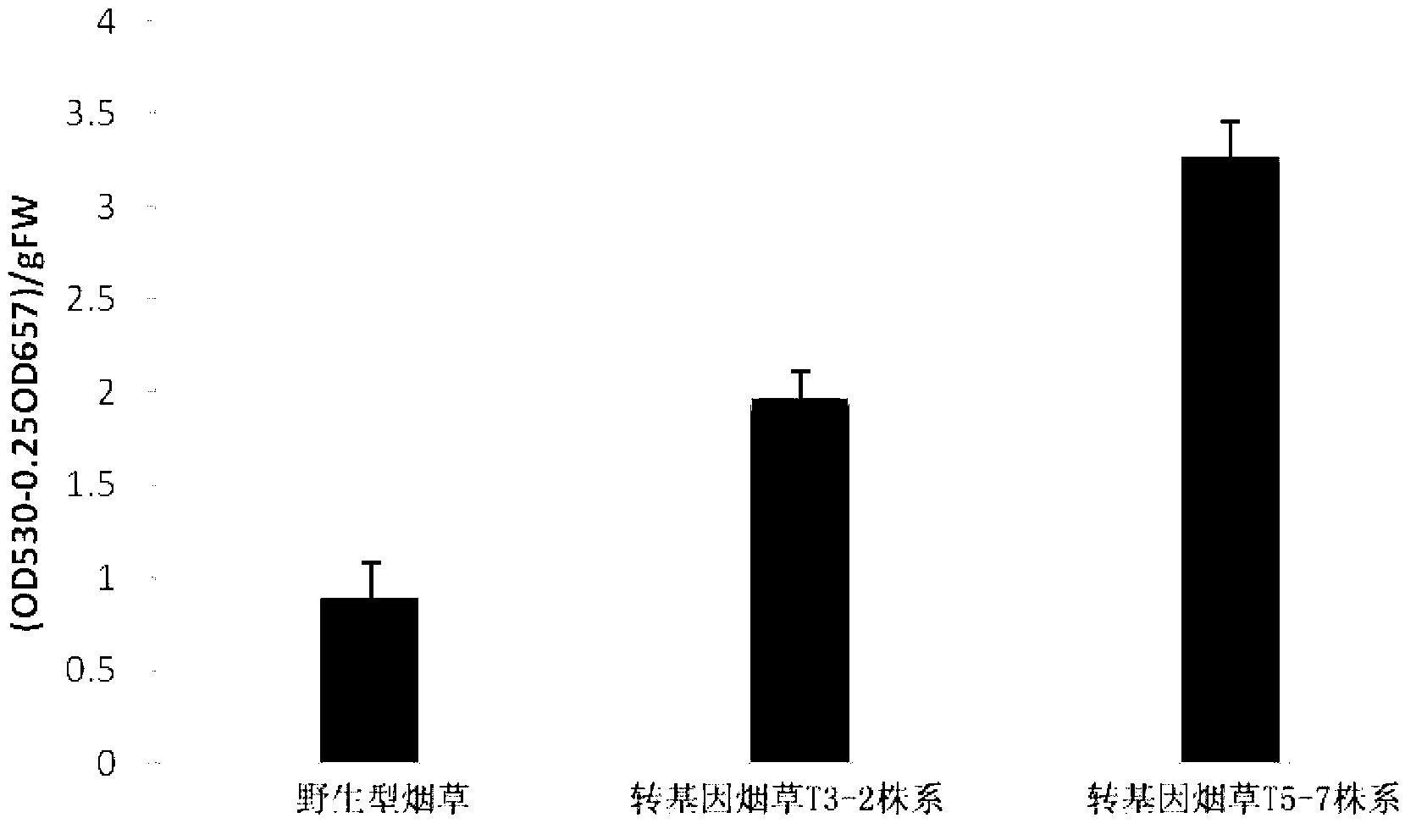Peanut SPL (squamosa promoter-binding protein-like) transcription factor gene, as well as encoded protein and application thereof
A technology of transcription factor and peanut, applied in application, genetic engineering, plant genetic improvement, etc.
- Summary
- Abstract
- Description
- Claims
- Application Information
AI Technical Summary
Problems solved by technology
Method used
Image
Examples
Embodiment 1
[0030] Embodiment 1: determination of peanut anthocyanin content
[0031] Referring to the methods of Mancinelli et al (1991) and Serrano et al (2012), the anthocyanin contents in the roots, stems, and leaves of the peanut purple mutant and Fenghua No. 1 were respectively determined. Specific steps are as follows:
[0032] (1) Weigh 50 mg of peanut material, place it in a 1.5 mL centrifuge tube, and grind it into powder with liquid nitrogen.
[0033] (2) Add 700 μl acidic methanol (CH 3 OH:HCl volume ratio is 99:1), extract overnight at 4°C. (Note: Three sets of biological repetitions were set up, and each set was measured 3 times.)
[0034] (3) Centrifuge at 12,000 rpm for 1 min at 4°C, take 600 μL of supernatant and place in a new centrifuge tube, then add 1 mL of chloroform, and then add 400 μl of distilled water.
[0035] (4) Centrifuge at 12000 rpm for 10 min at 4°C, and the supernatant is used for the determination of anthocyanin content.
[0036] (5) Use a spectrop...
Embodiment 2
[0043] Embodiment 2: peanut SPL2-1 gene cloning
[0044] The extraction method of peanut total RNA is as follows:
[0045] (1) Weigh 1g of the mixed material of Fenghua No. 1 stem and leaf, grind it thoroughly in liquid nitrogen, and then quickly transfer it to a pre-cooled 1.5mL Eppendof tube (about 200mg sample per tube).
[0046] (2) Preheat CTAB extract at 65°C (components: 2wt% cetyltrimethylammonium bromide (CTAB), 1.4mol / L NaCl, 20mmo / L ethylenediaminetetraacetic acid (EDTA, pH8.0 ), 100mmol / L Tris-HCl (pH8.0), 2wt% polyvinylpyrrolidone (pvp-40)).
[0047] (3) Add 600 μL of preheated CTAB extract, mix quickly, and incubate at 65°C for 5 minutes, and mix thoroughly for 3 to 5 times during this period.
[0048] (4) After cooling to room temperature, add an equal volume (600 μL) of water-saturated phenol / chloroform / isoamyl alcohol (volume ratio 25:24:1) mixture, and mix thoroughly.
[0049] (5) 4°C, 12000rpm, centrifuge for 15min.
[0050] (6) Transfer the supernatant to...
Embodiment 3
[0129] Embodiment 3: Real-time PCR quantitatively detects the expression level of SPL2-1
[0130] Preparation of cDNA template:
[0131] Using the peanut purple mutant unearthed for about two weeks and Fenghua No. 1 as materials, total RNA was extracted from roots, stems, and leaves by the above-mentioned CTAB method, and the qualified RNA samples were reverse-transcribed, and the reverse-transcribed products were Can be used as a template for Real-time PCR.
[0132] Real-time PCR reaction system and reaction procedure:
[0133] The fluorescent dye is FastStart Universal SYBR Green master (ROX) from Roche, and the reaction system is as follows:
[0134]
[0135] Mix the above reaction solution evenly, and then carry out PCR reaction.
[0136] Reaction program: 95°C for 10min; 95°C for 15s, 60°C for 1min, at which time fluorescence signal is collected, 40 cycles; 95°C for 15s, 60°C for 1min; 0.3°C / s to 95°C, 95°C for 15s, during this period continuous Collect fluorescent...
PUM
 Login to View More
Login to View More Abstract
Description
Claims
Application Information
 Login to View More
Login to View More - R&D
- Intellectual Property
- Life Sciences
- Materials
- Tech Scout
- Unparalleled Data Quality
- Higher Quality Content
- 60% Fewer Hallucinations
Browse by: Latest US Patents, China's latest patents, Technical Efficacy Thesaurus, Application Domain, Technology Topic, Popular Technical Reports.
© 2025 PatSnap. All rights reserved.Legal|Privacy policy|Modern Slavery Act Transparency Statement|Sitemap|About US| Contact US: help@patsnap.com



